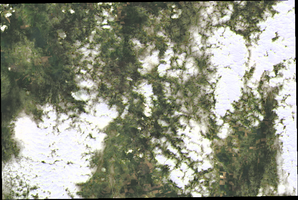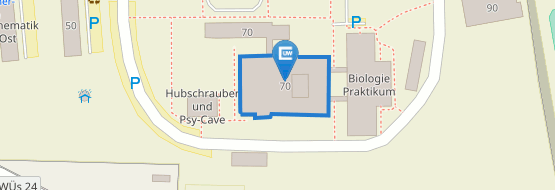Image Fusion

The Challenge
There is a wide range of satellites for earth observation that generate data in varying temporal and spatial resolutions. For instance, the Terra (EOS AM-1) and Aqua (EOS PM-1) satellites, equipped with the Moderate Resolution Imaging Spectroradiometer (MODIS), offer high temporal resolution, capturing images every 1-2 days, but with a spatial resolution of 500 meters per pixel. In contrast, the Sentinel satellites, part of the European Copernicus program, deliver much higher spatial resolution but only revisit the same location every 16 days. Additionally, the presence of clouds can further extend the intervals between obtaining usable images.
Processing and integrating satellite data into time series for remote sensing applications is computationally intensive and demands substantial memory resources. The pre-processing steps, including cloud detection and removal, atmospheric correction, and data fusion, require significant computing power and storage, which can be a bottleneck in efficiently utilizing satellite imagery.
Current Research Topics
We are focusing on enhancing the efficiency and accuracy of satellite image processing to support various Earth observation applications. Key areas of interest include:
- Efficient Preprocessing: Streamlining the preprocessing of raw TIFF and GeoTIFF images to quickly retrieve images of specific locations.
- Image Scaling: Developing advanced techniques for upscaling and downscaling images to ensure consistency and detail across different resolutions.
- Cloud Detection: Performing accurate cloud detection using AI and other innovative methods to improve the quality of satellite imagery.
- Cloud Removal: Employing image fusion and AI to effectively remove clouds from satellite images, enhancing the clarity and usability of the data.
- High-Resolution Time Series Generation: Creating time series with high temporal and spatial resolution for specific locations, enabling detailed analysis and monitoring over time.
Applications and Usecases
- Environmental Monitoring
- Observing changes in forest cover
- Monitoring changes in ice caps, glaciers, and snow cover, as well as tracking shifts in vegetation patterns and sea levels to understand the impacts of climate change
- Agriculture
- Using vegetation indices (e.g., NDVI) to monitor crop health, detect disease outbreaks, and optimize irrigation and fertilization practices
- Estimating crop yields based on temporal changes in vegetation cover and growth patterns
- Disaster Management
- Tracking the extent and progression of floods in near-real time, which is crucial for emergency response and recovery efforts
- Detecting and monitoring wildfires, assessing burn severity, and understanding the impact on ecosystems and human settlements
- Analyzing pre- and post-event images to assess damage and plan recovery efforts
- Urban Planning and Management
- Tracking the expansion of urban areas, identifying patterns of urban sprawl, and informing sustainable development planning
- Assessing the impact of urban development on the environment, including changes in land cover and heat island effects
- Scientific Research
- Tracking cloud cover, aerosols, and other atmospheric components
- Observing geological processes such as volcanic activity, land subsidence, and tectonic movements
- ...
Related Publications
- D. K. Babu, C. Kaufmann, M. Schmidt, T. Dahms, and C. Conrad. Autonomous time series generation of high spatial resolution images - a feasibility study. In 68th International Astronautical Congress, Adelaide, Australia, Sept. 2017.
- D. K. Babu, C. Kaufmann, M. Schmidt, T. Dahms, and C. Conrad. Semi-autonomous remote sensing time series generation tool. In L. Bruzzone, editor, Image and Signal Processing for Remote Sensing XXIII, volume 10427, pages 99–113, Warsaw, Poland, Oct. 2017. International Society for Optics and Photonics, SPIE.
- D. K. Babu, M. Schmidt, T. Dahms, and C. Conrad. Impact on the quality and processing time due to change in pre-processing operation sequence on satellite images moderate resolution data. In 67th International Astronautical Congress, Guadalajara, Mexico, Sept. 2016.
- T. Dahms, C. Conrad, D. K. Babu, M. Schmidt, and E. Borg. Derivation of biophysical parameters from fused remote sensing data. In Geoscience and Remote Sensing Symposium (IGARSS), 2017 IEEE International, pages 4374–4377. IEEE, 2017.
- C. Kaufmann, D. K. Babu, M. Schmidt, and C. Conrad. Automated Cloud and Cloud Shadow Removal and Filling on Landsat, MODIS and Sentinel Data. In 69th International Astronautical Congress, Bremen, Germany, Oct. 2018.




